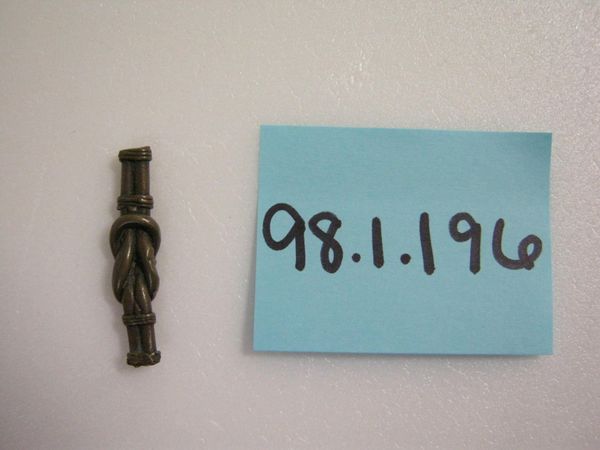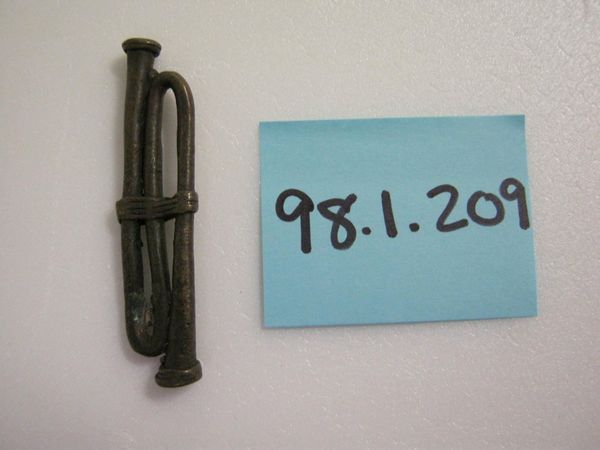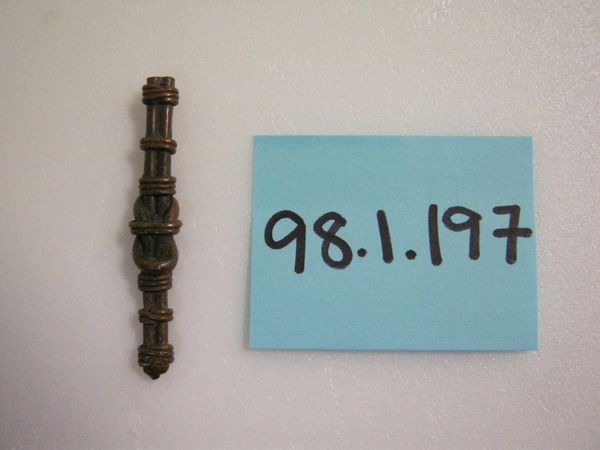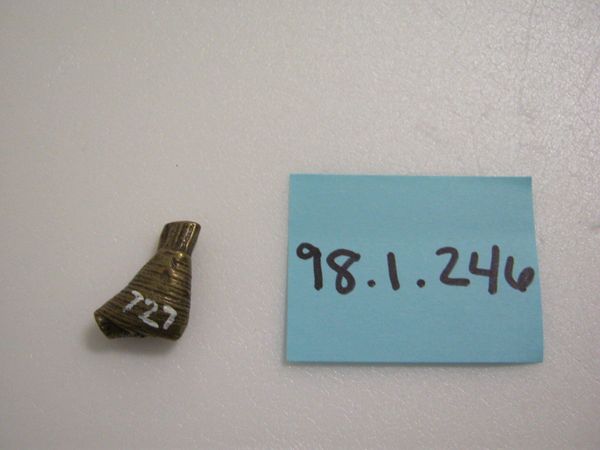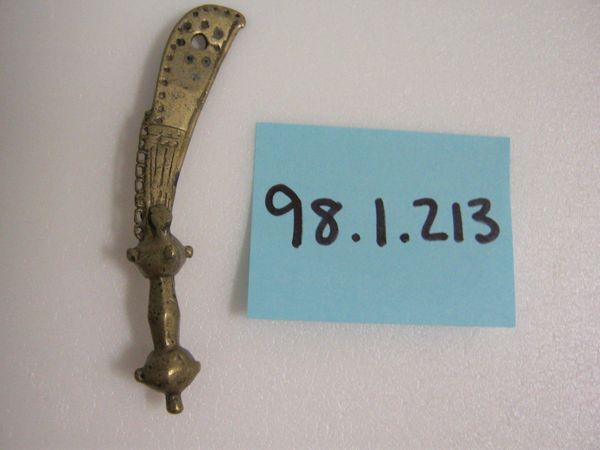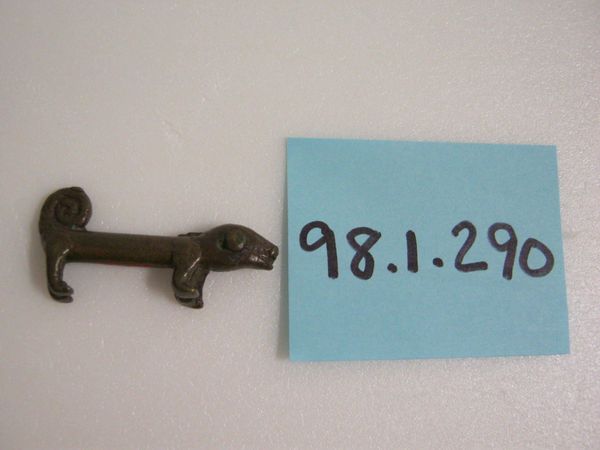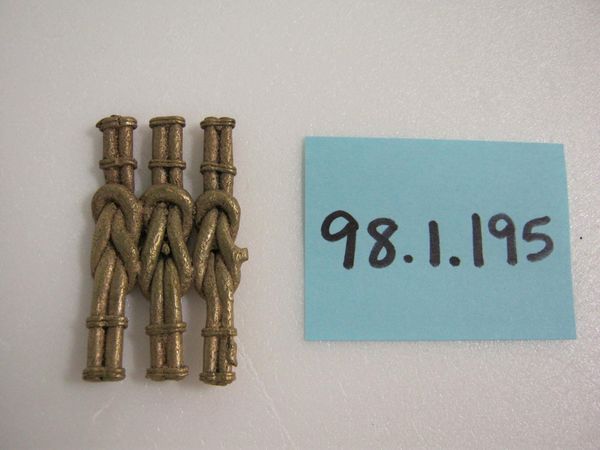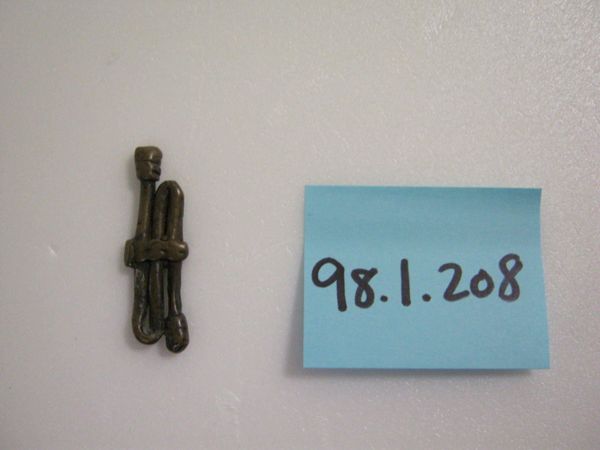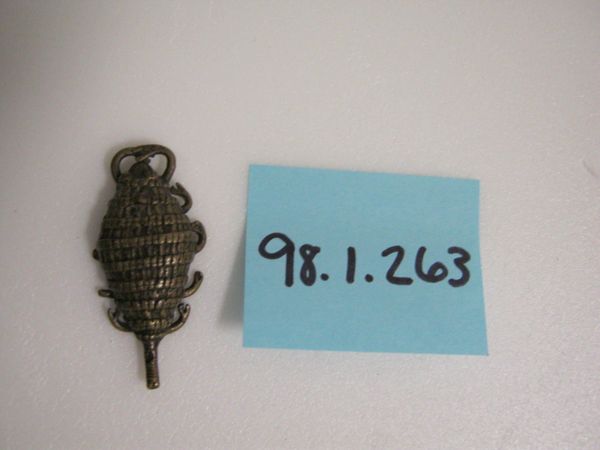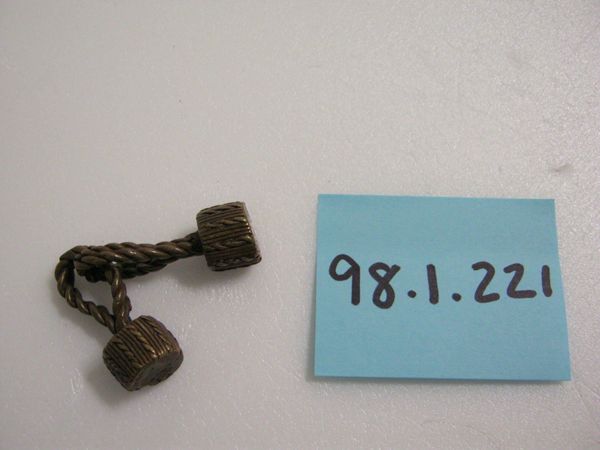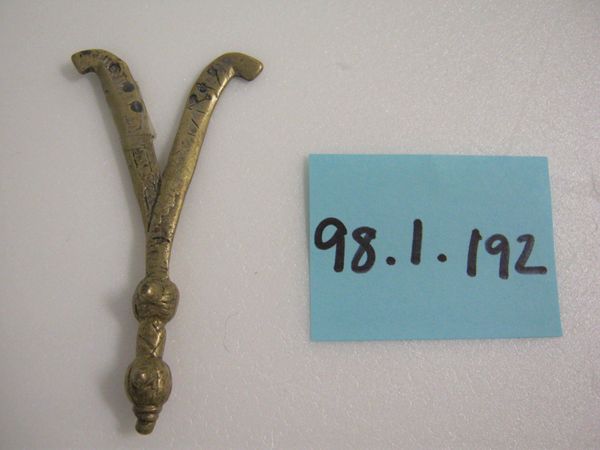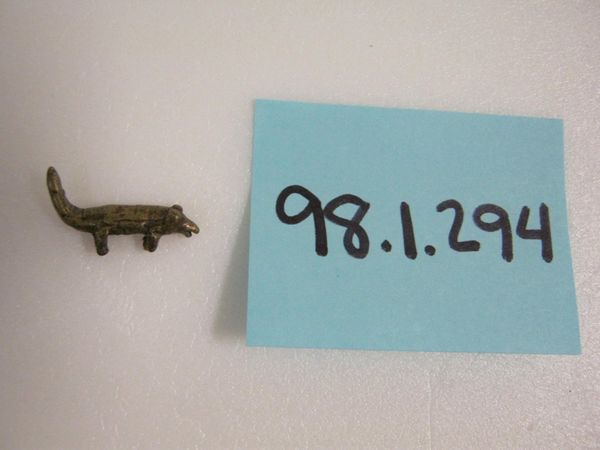![Goldweight [Knot] by Akan](/_next/image?url=https%3A%2F%2Fd2w8kbdekdi1gv.cloudfront.net%2FeyJidWNrZXQiOiAiYXJ0ZXJhLWltYWdlcy1idWNrZXQiLCAia2V5IjogImFydHdvcmtzLzkxNzU0MDkwLTQzMTQtNDJhNi1iMTU2LTA5ZDU1ODg2MDBmNy85MTc1NDA5MC00MzE0LTQyYTYtYjE1Ni0wOWQ1NTg4NjAwZjdfZnVsbC5qcGciLCAiZWRpdHMiOiB7InJlc2l6ZSI6IHsid2lkdGgiOiAxOTIwLCAiaGVpZ2h0IjogMTkyMCwgImZpdCI6ICJpbnNpZGUifX19&w=3840&q=75)
brass, sculpture
brass
sculpture
Dimensions: 1 1/4 x 7/16 x 1/4 in. (3.18 x 1.11 x 0.64 cm)
Copyright: Public Domain
Editor: This diminutive brass sculpture, called “Goldweight [Knot],” was created by the Akan people sometime between the 19th and 20th centuries. It looks like a complex knot rendered in surprising detail for such a small object. What strikes you about this piece? Curator: The lost wax casting technique used to create this goldweight reveals a lot about Akan society. It wasn't just about aesthetic representation. The material itself – brass – and the labor invested in its production, signal a system of trade and a complex social hierarchy. Editor: Could you elaborate on that a bit? I always thought of art as being distinct from labor, especially something like a tool. Curator: Precisely! By viewing it solely as "art," we overlook the cultural context. Goldweights were functional objects, a standardized system of weights, ensuring fair trade. This challenges our traditional understanding of where ‘art’ ends and ‘craft’ begins. The means of production is paramount, isn’t it? How brass was sourced, the labor invested – that reveals a history often absent from conventional art historical narratives. Editor: So, the form of the knot itself – is that purely decorative, or does that tie in, so to speak, with the function and the materiality? Curator: A great question. Knots symbolized status. Wealth, and prestige was visualized. This piece exemplifies how materiality, production, and symbol converge. This seemingly simple object tells a story about trade networks, craftsmanship, and the visual language of wealth within the Akan culture. What do you make of the industrial production era date? Editor: It reframes how I see "traditional" art. Instead of viewing this goldweight in isolation, appreciating its aesthetic, I can now see it as a tangible piece of economic and social history. Thank you.
Comments
No comments
Be the first to comment and join the conversation on the ultimate creative platform.

